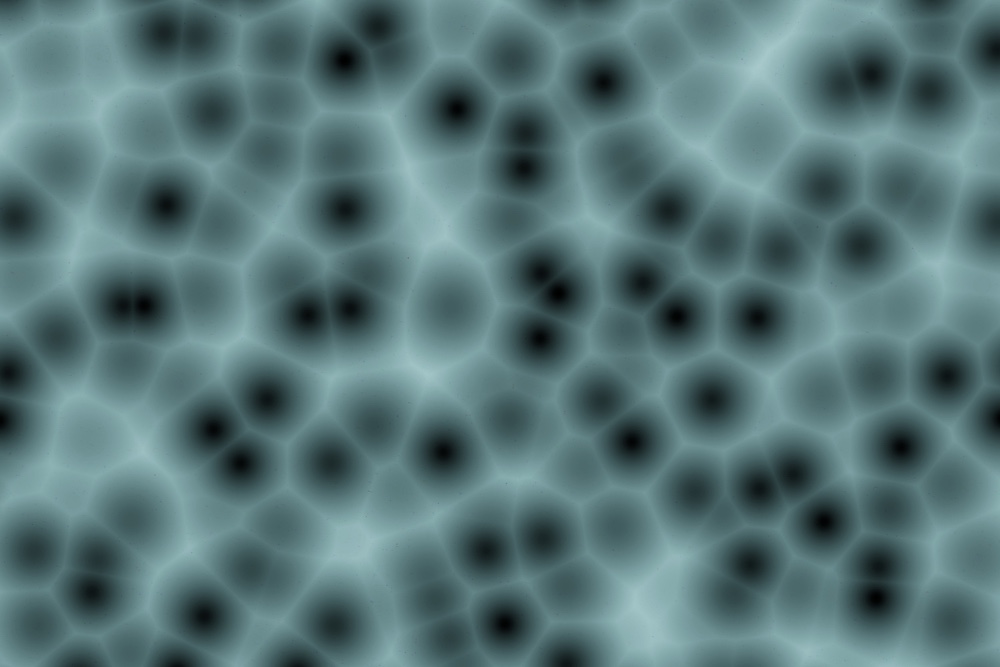Is Space Full of Quantum Foam?

Look at space under a microscope and what do you see? Nothing. Magnify 1,000 times. Nothing. Magnify 1,000,000 times. Still nothing. Magnify 1,000,000,000 times. Absolutely nothing.
At this point, the average person would probably be satisfied with the conclusion that space is, in fact, nothing. This makes intuitive sense, after all, and besides, we're already far beyond the magnification power of real microscopes.
Quantum physicists aren't average people, however. Armed with theoretical microscopes, they keep on magnifying, gazing deeper and deeper into empty space until out of nothing, they suddenly see something.
That something is a roiling collection of virtual particles, collectively called quantum foam. According to quantum physicists, virtual particles exist briefly as fleeting fluctuations in the fabric of spacetime, like bubbles in beer foam.
"The 'bubbles' in the quantum foam are quadrillions of times smaller than atomic nuclei and last for infinitesimal fractions of a second—or in 'quantum-speak', the size of a Planck Length for a Planck Time," Eric Perlman, a Professor of Physics and Space Science at Florida Institute of Technology, says.
Something so utterly small has obviously not been directly observed. So why can we be very sure this quantum foam exists? One of the greatest pieces of evidence for it was predicted back in 1947 by Dutch physicists Hendrik Casimir and Dirk Polder. Fermilab senior experimental physicist Don Lincoln explained the so-called "Casimir Effect" for PBS:
If the quantum foam was real, they reasoned, then the particles should exist everywhere in space. Further, since particles also have a wave nature, there should be waves everywhere. So what they imagined was to have two parallel metal plates, placed near one another. The quantum foam would exist both between the plates and outside of them. But because the plates were placed near one another, only short waves could exist between the plates, while short and long wavelength waves could exist outside them. Because of this imbalance, the excess of waves outside the plates should overpower the smaller number of waves between them, pushing the two plates together. Thirty years after it was first predicted, this effect was observed qualitatively. It was measured accurately in 1997.
Sign up for the Live Science daily newsletter now
Get the world’s most fascinating discoveries delivered straight to your inbox.
The idea that space is, at its very foundation, a frothy, chaotic mess has huge ramifications for our understanding of the universe.
"It is on such short distance scales that we encounter the fundamental incompatibility between general relativity and quantum mechanics," string theorist and Columbia University professor Brian Greene wrote in his book The Elegant Universe. "The notion of a smooth spatial geometry, the central principle of general relativity, is destroyed by the violent fluctuations of the quantum world on short distance scales."
Thus, conclusively demonstrating that quantum foam does or does not exist would be very useful in sorting out the true nature of reality. But, as happens frustratingly often in science, recent experiments disagree. A possible way to test for the presence of quantum foam is to measure how long it takes photons erupting from stellar explosions to travel great distances. If spacetime is flat and boring, two photons ejected from the same source should take the same time to travel a set distance. But if spacetime is foamy, then one photon might get slowed by the slight perturbations. A 2009 analysis found that high-energy and low-energy photons from the same gamma-ray burst arrived at a set location at different times, but two subsequent analyses of other bursts showed little to no variance, indicating that spacetime is smooth, or at least not as foamy.
None of the experiments, however, can measure with fine enough detail to rule out quantum foam on the tiniest of scales. We might just have to wait for a microscope that can see down to 1.6 x 10^-35 meters – the Planck length – to be certain, and constructing such a device would be a tall task indeed.
Originally published on RealClearScience.










